A recent study shows frequently harvested filter feeders can keep wild populations healthy
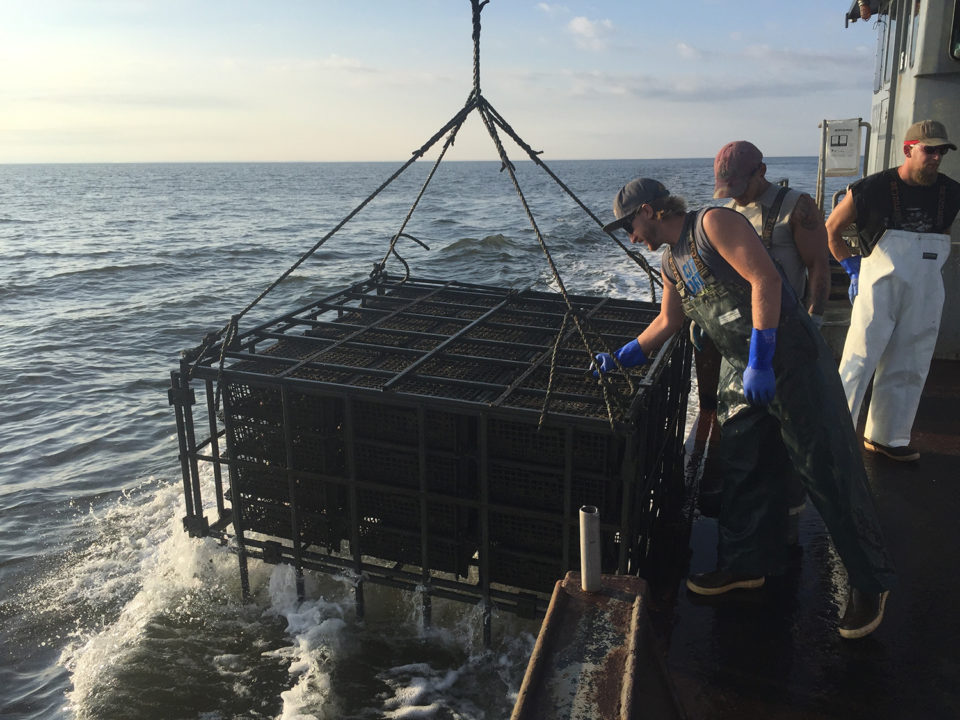
Disease spread from farmed species to wild populations is a frequent concern in aquaculture.
Not so with oysters, according to Dr. Tal Ben-Horin, a fisheries researcher at the University of Rhode Island who says farmed oysters reduce disease risks to nearby wild oysters by filtering parasite-ridden water.
In their study, “Intensive oyster aquaculture can reduce disease impacts on sympatric wild oysters,” Ben-Horin and his team integrated existing data into mathematical models examining interactions between wild and cultured oyster (Crassostrea virginica) populations and their common parasite Perkinsus marinus (the agent of Dermo disease). They found that cultured oysters, when harvested on a regular schedule, typically don’t put much infected material back into the water. Their results suggest that oyster farming can even enhance wild oyster populations if oysters are harvested before spreading disease.
“Dermo proliferates in oyster tissues,” said Ben-Horin. “The infected oysters then release it into the water where it spreads to other oysters. We looked at aquaculture harvest rates, which are directly tied to how long oysters are in the water. If it’s less than 18 months, aquaculture will have a pretty positive effect at removing disease-causing parasites.”
Oysters infected with Perkinsus marinus pass the parasite on to other oysters, but it may take several years to complete this transmission cycle. High numbers of farmed oysters filtering parasites out of the water column can be a good thing, especially because farmed oysters tend to be relatively disease-resistant. When oysters are held on farms long enough to filter disease-causing parasites, but not too long as to allow parasites to spread, oyster aquaculture can alleviate disease impacts to wild oyster populations nearby.

Natalie Ruark is a nursery manager at Hoopers Island Oyster Company in Cambridge, Md. She told the Advocate that farmed oysters with a high harvest rate can act as a “sink.”
“If oysters are harvested at a moderate to high rate, disease-causing pathogens can be decreased in aquaculture areas. But these farmed oysters must meet a certain quality benchmark before they can be harvested, if farmers want a good return on their investment,” she explained. “If shells are thin or poorly shaped, the oysters, although market size, will spend longer in the water to achieve a better-quality shell. This extended time increases the density of disease-causing pathogens.”
Ruark believes that the study is encouraging for farmers in her area who want to know how their practices benefit the environment.
“Aquaculture relieves the pressure on natural populations and provides an alternative to meet market demand,” she said. “As the science and best practices of oyster aquaculture advance, we can improve the symbiotic relationship with wild populations to maintain a thriving industry for both. Dr. Ben-Horin’s work provides a vital insight into what’s needed to continue the positive impact that aquaculture has provided to the oyster industry.”
“Tal’s work raises questions about sanctuaries and whether they should be rotationally harvested periodically to avoid having old oysters that might become reservoirs of disease,” said Bob Rheault, executive director of the United States-based East Coast Shellfish Growers Association. “Or conversely, maybe the old survivors should be protected from harvest and allowed to spawn because perhaps they have some measure of resistance.”
When siting new oyster aquaculture operations near wild populations, Ben-Horin suggests that farmers consider gear types. For example, farms that grow their oysters on the bottom instead of in raised cages or bags are unlikely to recover all oysters, resulting in some remaining on the bottom for longer and an increased risk of disease spreading. Ruark says that surface gear may also help.
“Surface grow-out gear like Hexcyl basket systems or Hoopers Island’s HI-Flow cages harness wave action to shape and thicken shells. Utilizing warmer, high food density areas to encourage fast growth can also produce a quality oyster that becomes market ready more quickly,” she said. “So, using surface grow-out gear that gets oysters to market faster serves a dual purpose: It reduces disease prevalence and provides a faster return on investment.”
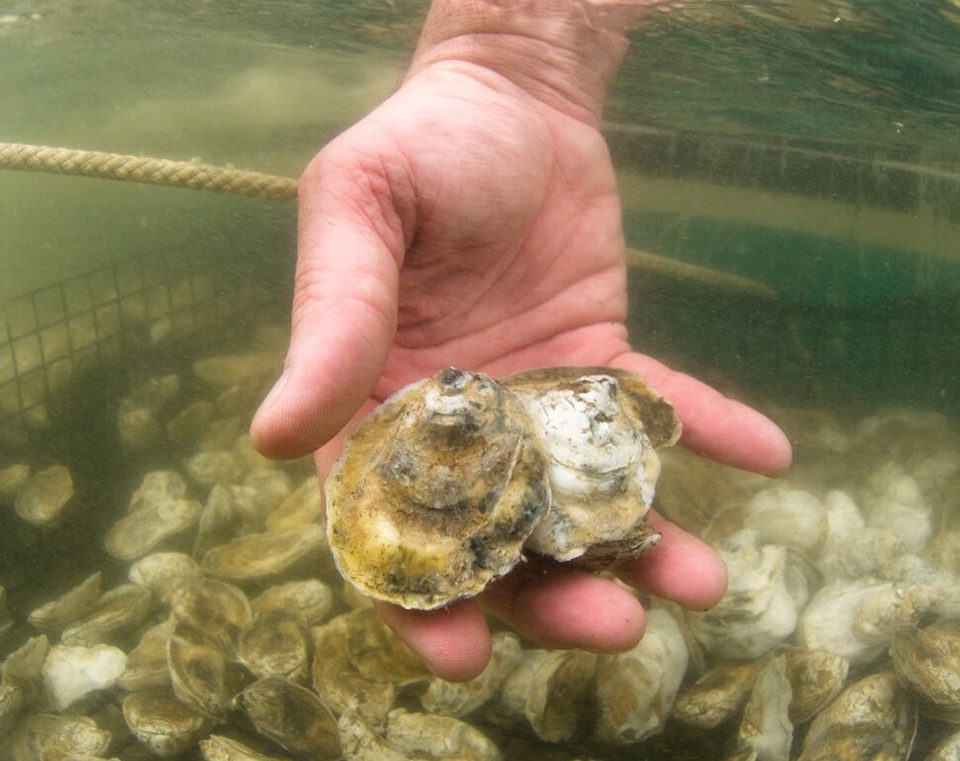
Rheault highlights the importance of seed that has been selected for disease resistance.
“Shellfish farmers must always be aware of the potential presence of pathogens in their waters, and ensure that seed being imported into their state isn’t infected with some novel parasite. Every state has regulations dictating that seed must be inspected prior to shipment so growers can minimize the risk of introducing new parasites to a region,” he said.
Ben-Horin and his team are now applying the study’s mathematical models to real ecosystems. Work is underway to better understand spatial management, how far parasites can spread, and what types of activity should exist in particular regions of an estuary or the ocean.
“Our study has wild and farmed oysters interacting as if they are in the same space. In reality we have aquaculture existing within a seascape of activities, including wild-capture fisheries, restoration and no-harvest sanctuaries. We need a better idea of how parasites spread through these systems and how they respond to each of these activities,” said Ben-Horin.
“Understanding the distribution of disease-causing pathogens is critical to restrict their spread,” added Ruark. “States can also determine their restrictions based on the nature and prevalence of diseases present in their waters and whether the requested seed to import is clean, i.e. free or below a minimum threshold.”
“Disease and farming are complex and varied. There is much we still don’t know,” said Rheault. “But one thing is clear – farmers can put a lot of shellfish in the water and harvest them before most progressive diseases become catastrophic. When you’re able to do this, it’s nice to know that the shellfish themselves are able to suppress pathogen exposure to the population through their own feeding activity. Usually one would predict that large populations would become sources instead of sinks. It puts things in a different light, and provides yet another reason to do more aquaculture – not less!”
Disease management, concluded Ben-Horin, requires understanding interactions between wild and farmed.
“Our goal is to shift the conversations about how diseases operate within real ecosystems,” he said.
Follow the Advocate on Twitter @GAA_Advocate
Now that you've reached the end of the article ...
… please consider supporting GSA’s mission to advance responsible seafood practices through education, advocacy and third-party assurances. The Advocate aims to document the evolution of responsible seafood practices and share the expansive knowledge of our vast network of contributors.
By becoming a Global Seafood Alliance member, you’re ensuring that all of the pre-competitive work we do through member benefits, resources and events can continue. Individual membership costs just $50 a year.
Not a GSA member? Join us.
Author
-

Bonnie Waycott
Bonnie Waycott is a freelance writer specializing in aquaculture development and fisheries management, with a particular focus on Japan. She has a keen interest in the recovery of aquaculture in Tohoku, following the Great East Japan Earthquake and Tsunami of March 2011.
Tagged With
Related Posts
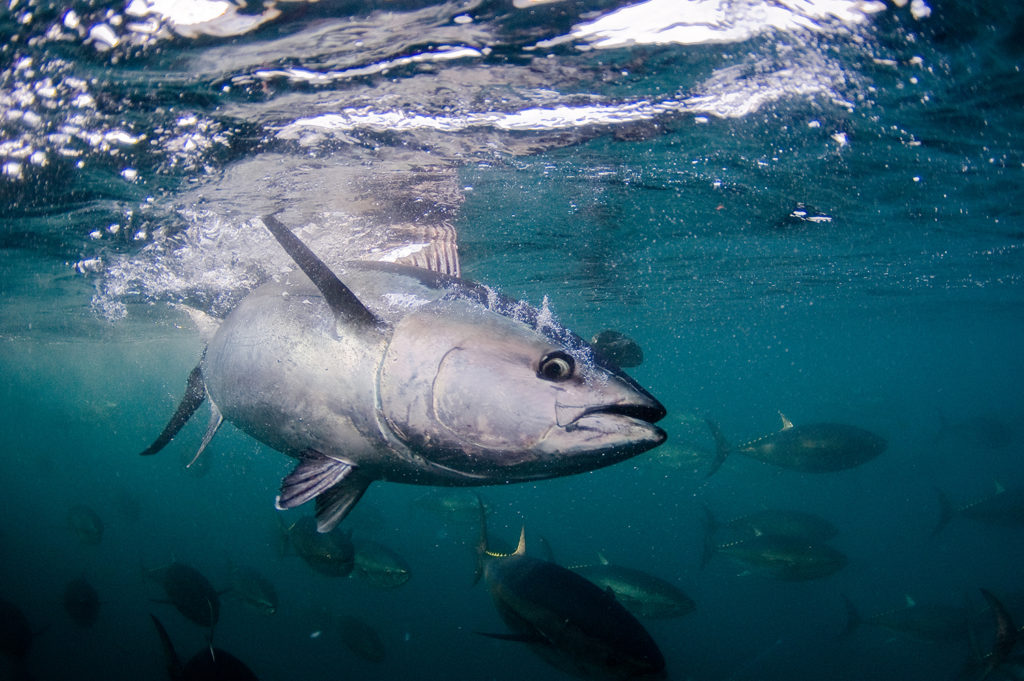
Innovation & Investment
Japan hopes aquaculture can save bluefin tuna
Bluefin tuna may be the most prized fish in the ocean. If hon-maguro sashimi is to remain chic, closed-cycle aquaculture may help keep it on menus.
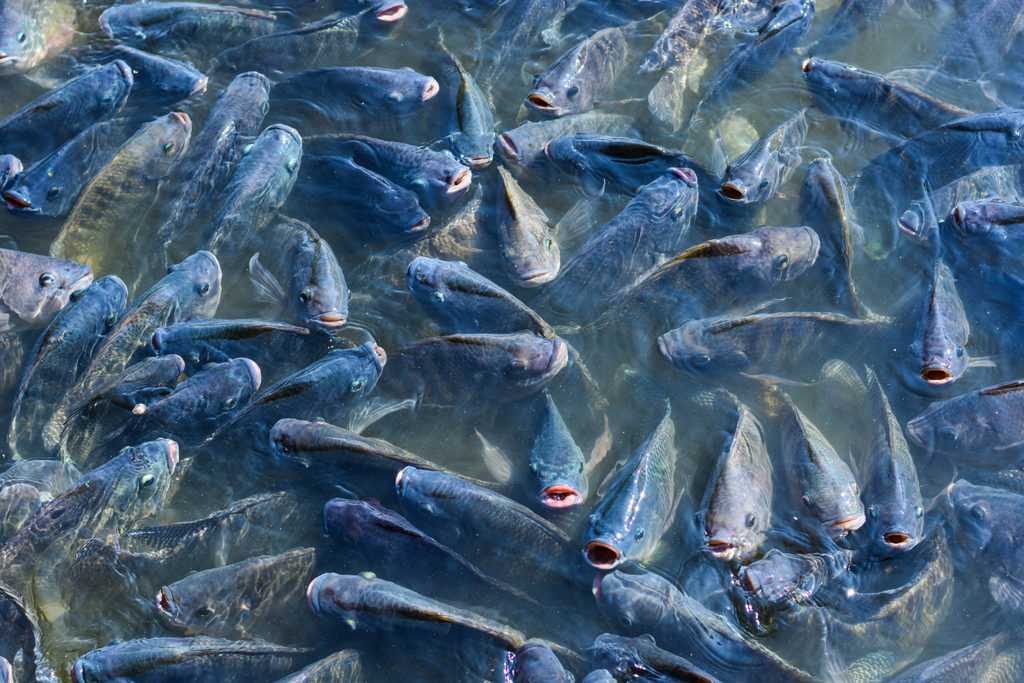
Health & Welfare
Researchers examine antimicrobial resistance potential in aquaculture
The influence of antibiotics in fish and their effects on the gut microbiome aren’t well understood, says research team examining antimicrobial resistance.
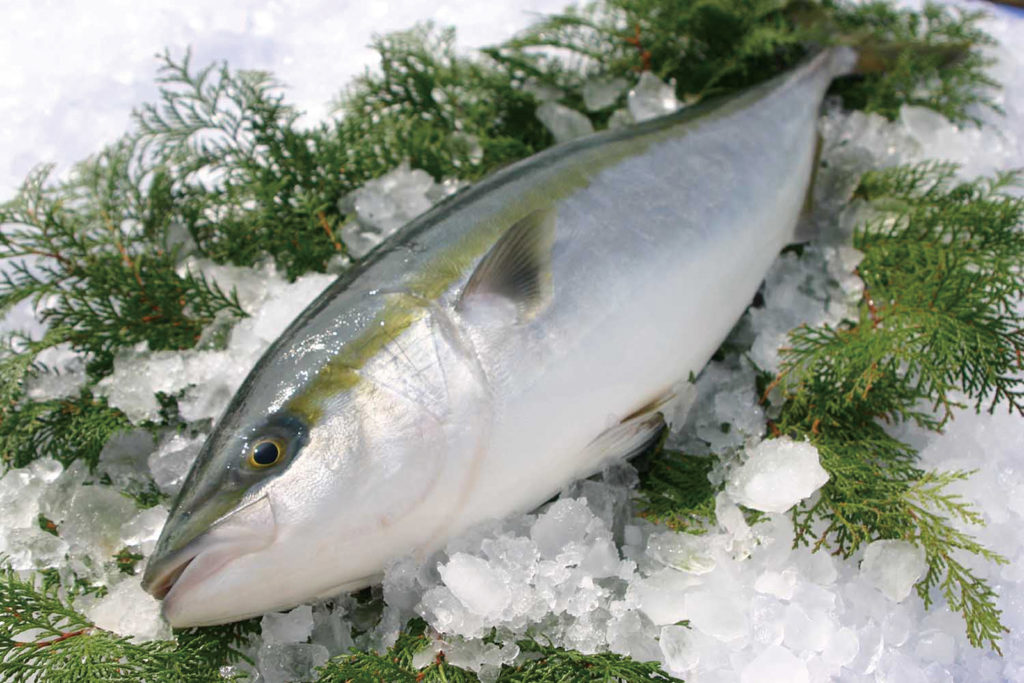
Innovation & Investment
Japan to set sustainability efforts in Olympics spotlight
With all eyes on Japan for the 2020 Olympic Games, leading advocates for responsible aquaculture there see a key opportunity to make stronger sustainability commitments.
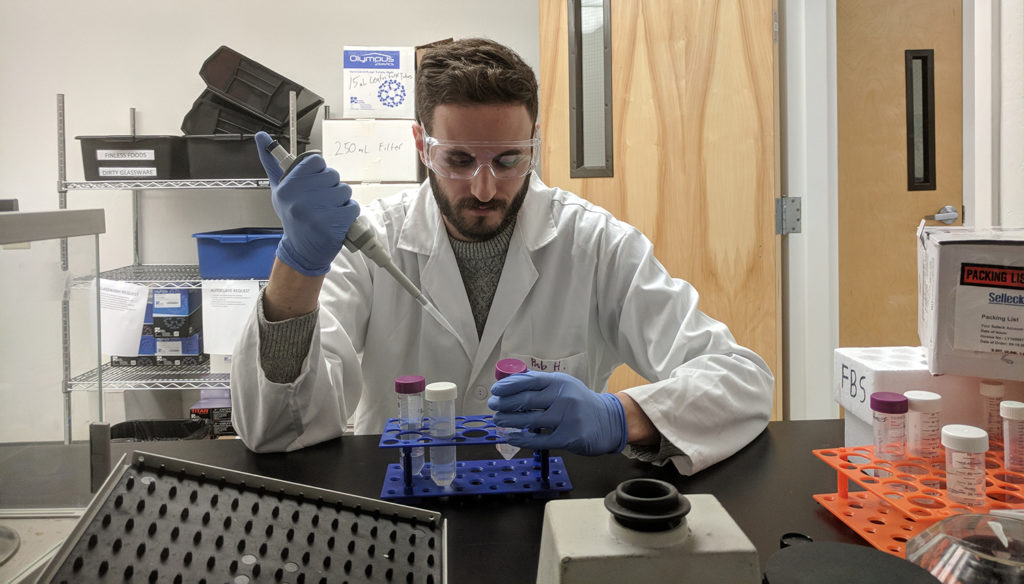
Innovation & Investment
Petri dish to plate: How close is cellular seafood?
Companies growing meat in laboratories need to overcome challenges including cost, regulation and consumer acceptance. Proponents believe there’s a place in the market for lab-grown fish meat.


